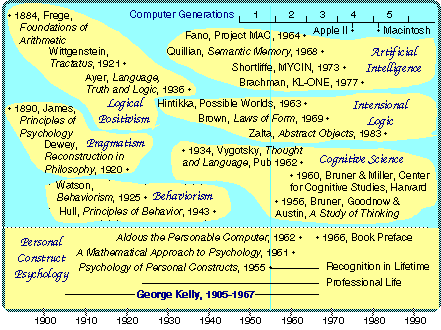
Mildred L G Shaw & Brian R Gaines
Knowledge Science Institute, University of Calgary
Calgary, Alberta, Canada T2N 1N4
{mildred, gaines}@cpsc.ucalgary.ca
(from The New Psychologist, 23-31, October, 1992)
Abstract
Introduction
Psychological Geometry
Constructs and Concepts
A Visual Language for the Logic
The Repertory Grid
Conclusions
References

Figure 1 The intellectual setting of personal construct psychology
Personal construct psychology can be seen to be an heir to European logical positivism and American pragmatism, taking an alternative path to behaviorism that is similar in many respects to what later became termed cognitive science. In this Kelly was preceded by Vygotsky in the USSR whose book Thought and Language appeared in 1934 but was suppressed until 1962 (Wertsch, 1985; Vygotsky, 1989). Luria, who had been a student of Vygotsky invited Kelly to Moscow in 1961 where he delivered a particularly clear statement of the formal principles of personal construct psychology in the light of reactions to his earlier book (Kelly, 1969). Kelly was working on a second book when he died of which, unfortunately, only the preface has been published (Kelly, 1970), and he also began to become involved with the computer simulation of personality (Kelly, 1963). However, his work never became part of the mainstream cognitive science literature although it has attracted widespread attention and application in management, education and clinical psychology (Shaw, 1981).
Kelly was a keen geometer with experience in navigation and an interest in multi-dimensional geometry. When he came to formalize his theory he took as his model Euclid's Elements and axiomatized personal construct psychology as a fundamental postulate together with eleven corollaries, terming the primitives involves elements and constructs. Kelly took far more than a vocabulary from Euclid. The Elements were the normative model for the science that arose out of the Greek enlightenment, and fulfilled a similar role in the second enlightenment for Descartes, Kant and others (Russell, 1946). The careful definition of terms, with attention to exact and overt presuppositions, and then the development of a rigorous deductive sequence with precise specification of hypothesis and constructions, provided an intellectual model that we follow today. Indeed in the post-modern literature the modern age has been characterized as based on the ethics of geometry (Lachterman, 1989).
Kelly presented his theory as a geometry of psychological space (Kelly, 1969), and his conceptual framework is very clear if seen in these terms. It may seem strange to base cognitive science on geometry rather than logic until one remembers that the reasoning structure of the Elements was the basis for both Greek and modern logic, and that geometry and logic in a category-theoretic framework are equivalent (Mac Lane, 1971). What Kelly achieved through the use of geometry was an intensional logic, one in which predicates are defined in terms of their properties rather than extensionally in terms of those entities that fall under them. In his time there were no adequate formal foundations for intensional logic--it was not until 1963 that Hintikka (1963) published the model sets formulation that gave intensional logic its possible worlds formal foundations.
"A person's processes are psychologically channelized by the way in which he anticipates events." (Kelly, 1955, p.46)
This was stated as a postulate to emphasize that it was presented as a convenient viewpoint from which to understand human behavior, not imputed to an underlying physiological or psychological reality. The basis of Kelly's approach to psychotherapy was that this was also a convenient viewpoint from which someone could understand, and modify, their own behavior. He saw all people as "personal scientists" in anticipating the world, and attempted to develop techniques where this anticipatory modeling activity was reflexively applied to the self. His first corollary, the construction corollary, states:
"A person anticipates events by construing their replications." (p.50)
This emphasis on the role in behavior of a view to the future is what distinguishes Kelly's approach to psychology. He saw people as driven by the need to cope with coming events in the world and all other aspects of behavior as deriving from this:
"A person's processes, psychologically speaking, slip into the grooves which are cut out by the mechanisms he adopts for realizing his objectives." (p.49)
These grooves provide templets for construing events which he termed "personal constructs":
"Man looks at his world through transparent templets which he creates and then attempts to fit over the realities of which the world is composed." (pp.8-9)
"Constructs are used for predictions of things to come, and the world keeps on rolling on and revealing these predictions to be either correct or misleading. This fact provides the basis for the revision of constructs and, eventually, of whole construct systems." (p.14)
Kelly introduces the notion of a psychological space as a term for a region in which we may place and classify elements of our experience. It is important to note that he did not suppose this space to pre-exist as a world of such elements, but rather to come into being through a process of construction by which we create a space in which to place elements as we come to construe them. He sees us as creating dimensions in personal psychological space as a way of providing a coordinate system for our experience, and emphasizes that the topology of the space comes into existence as it is divided:
"Our psychological geometry is a geometry of dichotomies rather than the geometry of areas envisioned by the classical logic of concepts, or the geometry of lines envisioned by classical mathematical geometries. Each of our dichotomies has both a differentiating and an integrating function. That is to say it is the generalized form of the differentiating and integrating act by which man intervenes in his world. By such an act he interposes a difference between incidents -- incidents that would otherwise be imperceptible to him because they are infinitely homogeneous. But also, by such an intervening act, he ascribes integrity to incidents that are otherwise imperceptible because they are infinitesimally fragmented. In this kind of geometrically structured world there are no distances. Each axis of reference represents not a line or continuum, as in analytic geometry, but one, and only one, distinction. However, there are angles. These are represented by contingencies or overlapping frequencies of incidents. Moreover, these angles of relationship between personal constructs change with the context of incidents to which the constructs are applied. Thus our psychological space is a space without distance, and, as in the case of non-Euclidian geometries, the relationships between directions change with the context." (Kelly, 1969)
It is this emphasis on the space itself being created by a process of making distinctions rather than being defined by the elements distinguished that gives personal construct psychology its intensional nature:
"the construct is a basis of making a distinction...not a class of objects, or an abstraction of a class, but a dichotomous reference axis" (Kelly, 1970)
Figure 2 shows the main features of Kelly's notion of psychological space. A construct is a dichotomous reference axis. It defines a family of planes orthogonal to it that divide the space:
"To catch a glimpse of psychological space we may imagine a system of planes, each with two sides or aspects, slicing through a galaxy of events" (Kelly, 1970)
However, only part of the space that is divided is used in placing elements:
"A construct is convenient for the anticipation of a finite range of events only. A personal construct system can hardly be said to have universal utility. Not everything that happens in the world can be projected upon all the dichotomies that make up a person's outlook. . . The geometry of the mind is never a complete system." (Kelly, 1970)
This division defines the dichotomous poles of the construct:
"Each construct involves two poles, one at each end of its dichotomy. The elements associated at each pole are like each other with respect to the construct and are unlike the elements at the other pole" (Kelly, 1955)
Even though Kelly's geometry is not metrically defined, he has no problems in using the defined constructs to generate a metric as shown in Figure 3:
"imagine a system of planes, each with two sides or aspects, slicing through a galaxy of events...If the set is moved into all possible positions it generates a paracartesian hyperspace with its relatively concrete scalar axes" (Kelly, 1970)
It is possible to develop a complete theory of cognition, action, learning and intention with the geometry.
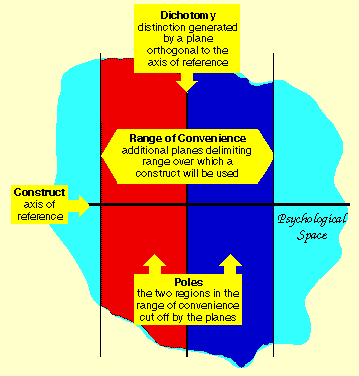
Figure 2 The geometry of psychological space

Figure 3 Scales in psychological space
"We use the term construct in a manner which is somewhat parallel to the common usage of `concept.' However, if one attempts to translate our construct into the more familiar term, `concept,' he may find some confusion. We have included, as indeed some recent users of the term `concept' have done, the more concretistic concepts which nineteenth-century psychologists would have insisted on calling `percepts.' The notion of `percept' has always carried the idea of its being a personal act--in that sense, our construct is in the tradition of `percepts.' But we also see our construct as involving abstraction--in that sense our construct bears a resemblance to the traditional usage of `concept.' ... Now when we assume that the construct is basically dichotomous, that it includes percepts, and that it is a better term for our purposes than the term `concept,' we are not quarreling with those who would use it otherwise. Within some systems of logic the notion of contrast as something distinct from irrelevancy is not part of the assumptive structure. We, on the other hand are simply assuming that this is the way people do, in fact, think." (Kelly, 1955, p.70)
The dichotomous aspect of constructs is the most significant aspect of the difference between Kelly's constructs and current usage of the term, `concept.' His dichotomy corollary states this:
"A person's construction system is composed of a finite number of dichotomous constructs." (p.59)
and it is a consequence of the two-sided nature of a distinction represented in the geometry. The range of convenience captures the notion of relevancy and the distinction within it then generates a natural opposition. That people tend to conceptualize the world in terms of restricted sorts that are then dichotomized is a phenomenon identified in antiquity (Lloyd, 1966) and common across many cultures (Maybury-Lewis & Almagor, 1989).
Since the term "concept" is used in psychology and in knowledge representation in somewhat different ways, it is useful to define it clearly in these contexts for the purposes of this paper. A psychological concept is defined to be that mental entity imputed to a distinction making agent as enabling it to make a particular distinction. Note that concepts are separated both from the distinctions they support and the entities they distinguish, and are not reified but seen as imputed to the agent. They are themselves distinctions made by an observer--possibly, a reflective observer. Concepts are state variables we impute to a knowledgeable agent. This definition also corresponds to Anglin's:
"a concept is all of the knowledge possessed by an individual about a category of objects or events"--"Concepts mediate categorization but concepts are not the resultant categories." (Anglin, 1977)
For personal construct psychology, the geometry and the logic, distinctions are the only primitives. One might ask "what is distinguished?", but the answer will be "distinctions." This corresponds to deriving the two phenomena in Kelly's construction corollary from a single primitive, that we distinguish events in the undifferentiated stream of circumstance, and then we further distinguish among the distinguished events by construing.
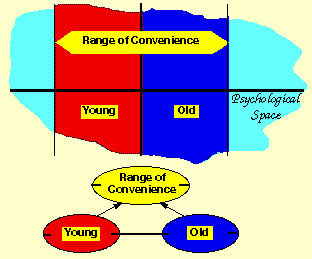
Figure 4 A visual language for the logic
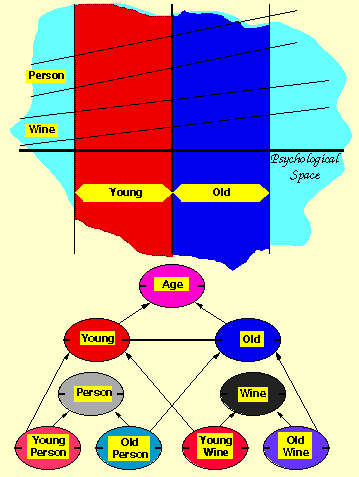
Figure 5 Logic of subsumed foci of convenience
There is an analogy between the visual language and the representation of chemical structures as atoms and bonds. Distinctions are the atomic primitives in personal construct psychology, and further constructions may be seen as complex `molecules' formed by distinctions joined through subsumption and disjoint `bonds.' For example, Figure 5 shows how the geometry and the logical visual language may both be used to represent different foci of convenience and contexts:
"A construct's range of convenience comprises all those things to which the user would find its application useful. A construct's focus of convenience comprises those particular things to which the user would find its application maximally useful. The context...is somewhat more restricted than the range of convenience...somewhat more extensive than the focus of convenience" (Kelly, 1955)
The distinctions, that cut out regions for `person' and `wine' each involve an additional dimension and are not represented in a two-dimensional diagram. This is a problem for the geometry that is overcome in the visual language for the logic.
Multiple constructs in psychological space correspond to multiple axes of reference, and the plans representing their distinctions and ranges of convenience intersect to define regions of the space corresponding to conjunction, composition and multiple inheritance in the logic as shown in Figure 6.
Kelly introduces anticipation within the geometry by attaching actions to regions of psychological space:
"A young girl anticipates marriage...The predicted husband does not exist for her in the flesh, but simply as the intersect of a limited number of conceptual dimensions. One day a young man plumps himself down on this waiting intersect...she marries him" (Kelly, 1955, p.121)
Kelly's theory of anticipation is based on attaching significance to such recognizable intersections:
"What one predicts is not a fully fleshed-out event, but simply the common intersect of a set of properties" (Kelly, 1955)
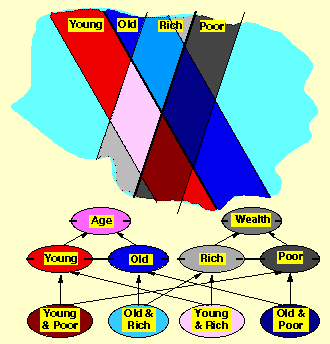
Figure 6 Logic of overlapping distinctions and their intersections
The logic remains intensional because there is no implication that elements have already been construed within the intersections. Kelly often explained a construct in terms of how elements were placed, but he does not define a construct as necessarily having elements placed along the axis. Elements are placed in the framework of existing constructs, or the construct system is adjusted to account for a new element. For example, in the marriage anticipation example given above, the predicted husband `exists' only as the "intersect of a limited number of conceptual dimensions." The attachment of an anticipation to this intersect corresponds to a commitment to place an element that falls in this intersect in the region defined by the pole of some other construct also. In logic this is a material implication rather than an entailment in that it is not necessitated by the way in which the distinctions are defined but is instead an auxiliary commitment or rule.
Rules allow a cognitive system to be anticipatory in containing structures which from one set of distinctions made about an event will imply that others should be made leading to prediction or action. Rules play a similar role in computational systems in generating recommendations for decision or action. Overtly modeling the conceptual system of an expert as such a structure is a basis for emulating the expert's performance in a knowledge-based system.
As shown in Figure 7, Kelly's model of anticipation is represented in the visual language by an additional primitive, a rounded corner rectangle, representing material implication or a rule. This is not so readily represented as a static image in the geometry because it is a dynamic principle, "if you place an element in this intersection then move it to this sub-intersection." A rule corresponds to an attractor in dynamics, that an element placed in a region of space is unstable and falls into the basin of an attractor (Abraham & Shaw, 1984). This can be represented in the geometry but the diagrams for activities of any reasonable complexity become very difficult to visualize and understand. It does, however, provide a nice link to the corresponding phenomena in the geometrical dynamics of neural networks underlying the phenomenon (Domany, Hemmen & Schulten, 1991).
The abstraction of the geometry in the visual language of the logic corresponds to taking multiple cross sections of the geometrical representation from different perspectives and presenting them together. It is way of dealing with the visualization of a high-dimensional space.
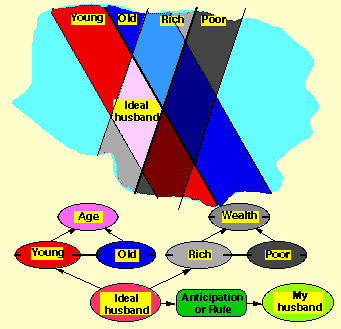
Figure 7 Logic of anticipation through rules
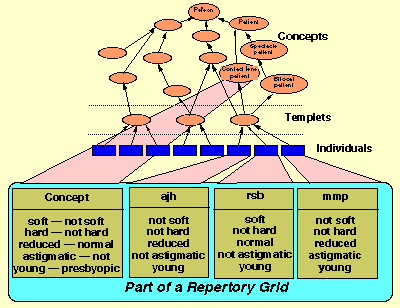
Figure 8 The repertory grid as a matrix of concepts, individuals and constraints
If one takes a particular concept somewhere in the lattice, and a set of elements asserted to fall under that concept, then each distinction that may be made about elements falling under that concept forms the rows of a matrix, the elements form the columns, and the constraints applying to a particular individual relative to a particular distinction form the values in the matrix.
The first two constructs are the possible recommendations for contact lens prescription, and the third refers to the reduced or normal tear production of the patient.. It can be seen how it relates to the concepts of a contact lens patient, who is a patient, who is a person. There are other types of patient such as a spectacle patient some of whom may be bifocal patients.
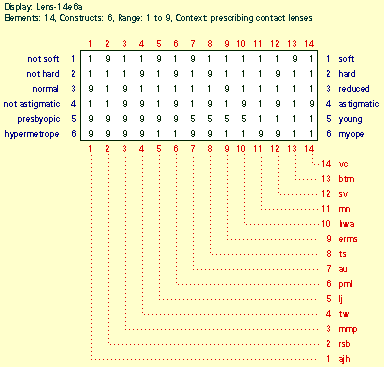
Figure 9 A repertory grid about contact lens presciptions
Figure 9 shows the full grid in its conventional form, as it would normally appear in the literature.
In clinical psychology, repertory grids have been used extensively without computer support, and techniques for manual elicitation are well-documented (Fransella & Bannister, 1977). However, repertory grid methodologies are difficult to undertake manually as they require feedback and management from the elicitor while at the same time attempting to avoid inter-personal interactions that would distort the elicitee's conceptual structures. Hence the advent of the personal computer in the mid-1970s and its evolution into the graphic workstations of the 1980s has been very significant for the practical application of the approach (Shaw, 1980, 1981; Mancuso & Shaw, 1988). Figures 10 and 11 show screens from a graphical repertory grid system (Gaines & Shaw, 1990) at work on a computer, using the contact lens prescription example.
The screen in Figure 10 shows a list of the constructs so far elicited, and various options available to the user to select her next task. The advice boxes can be turned off for an experienced user, or the next most sensible task chosen by clicking on the Advice button. Each button shown in the top part of the screen gives the user a different option.
Constructs are elicited in this system by the Macintosh click and drag facility. A construct axis can be generated from a triad or a pair of elements, from matched elements or just adding a new construct. The poles are labeled, and the element labels dragged on to the appropriate place on the axis. Element matches and construct matches at any level are shown by clicking on the bar at the middle right top of the screen, and can be edited, or new elements or constructs added as the user wishes.
Figure 11 shows a principal components analysis of the contact lens data. It is reminiscent of Kelly's model of psychological space, and that may be one reason for the popularity of such analyses. Each construct is represented by a dimension on the two axes explaining the most variance in the construct system. The elements are located in this space. We can see the two main construct clusters, one being astigmatic -- not astigmatic, hard -- not hard, and not soft -- soft. These later turn out to be the rules for prescribing lenses, the others specify the exceptions. An alternative form is the FOCUS analysis which shows the beginnings of the development of the logical hierarchical structure in space.
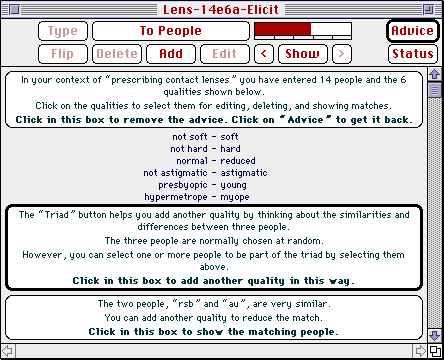
Figure 10 The RepGrid Screen showing existing constructs and available options

Figure 11 The RepGrid Screen showing a principal components analysis
This paper has given an overview of personal construct psychology and its expression as an intensional logic describing the cognitive processes of anticipatory agents. A theoretical framework has been developed and shown to provide logical foundations for personal construct psychology and computational knowledge representation schema. The framework is generated from the single primitive of "making a distinction." It has been used to provide cognitive and logical foundations for existing knowledge acquisition tools and techniques, and for the design of integrated knowledge acquisition systems.
Anglin, J.M. (1977) Word, Object, and Conceptual Development. Norton: New York.
Brachman, R.J. & Schmolze, J. (1985). An overview of the KL-ONE knowledge representation system. Cognitive Science, 9(2) 171-216 (April-June).
Domany, E., Hemmen, J.L. & Schulten, K., Eds. (1991). Models of Neural Networks. Berlin: Springer.
Fransella, F. & Bannister, D., Eds. (1977) A Manual for Repertory Grid Technique. London: Academic Press.
Gaines, B.R. (1991) Empirical investigation of knowledge representation servers: design issues and applications experience with KRS. AAAI Spring Symposium: Implemented Knowledge Representation and Reasoning Systems. pp. 87-101. Stanford (March)--also SIGART Bulletin 2(3) 45-56.
Gaines, B.R. & Shaw, M.L.G. (1990) RepGrid Manual Centre for Person Computer Studies, 3019 Underhill Drive NW, Calgary, AB, Canada T2N 4E4.
Hintikka, J. (1963). The Modes of Modality. Acta Philosophica Fennica, 16, 65-81.
Kelly, G.A. (1955). The Psychology of Personal Constructs. New York: Norton.
Kelly, G.A. (1963) Aldous: the personable computer. Tomkins, S.S. & Messick, S. Eds. Computer Simulation of Personality. pp.221-229. New York: Wiley.
Kelly, G.A. (1969) A mathematical approach to psychology. Maher, B. Ed. Clinical Psychology and Personality: The Selected Papers of George Kelly. pp.94-113. New York: Wiley.
Kelly, G.A. (1970) A brief introduction to personal construct theory. Bannister, D. Ed. Perspectives in Personal Construct Theory. pp.1-29. London: Academic Press.
Lachterman, D.R. (1989). The Ethics of Geometry. New York: Routledge.
Lloyd, G.E.R. (1966) Polarity and Analogy. Cambridge: Cambridge University Press.
Mac Lane, S. (1971) Categories for the Working Mathematician. New York: Springer-Verlag
Maher, B., Ed. (1969). Clinical Psychology and Personality: The Selected Papers of George Kelly. New York: Wiley.
Mancuso, J.C. & Shaw, M.L.G., Eds. (1988) Cognition and Personal structure: Computer Access and Analysis. New York: Praeger.
Maybury-Lewis, D. & Almagor, U. (1989). (Eds) The Attraction of Opposites. Ann Arbor: University of Michigan Press.
Russell. B. (1946). History of Western Philosophy. London: Allen & Unwin.
Shaw, M.L.G. (1980). On Becoming A Personal Scientist: Interactive Computer Elicitation of Personal Models Of The World. London: Academic Press.
Shaw, M.L.G., Ed. (1981). Recent Advances in Personal Construct Technology. London: Academic Press.
Vygotsky, L.S. (1989). Thought and Language. Cambridge, Massachusetts: MIT Press.
Wertsch, J.V., Ed. (1985). Culture, Communication and Cognition: Vygotskian Perspectives. Cambridge: Cambridge University Press.